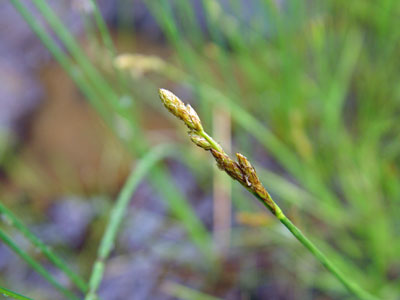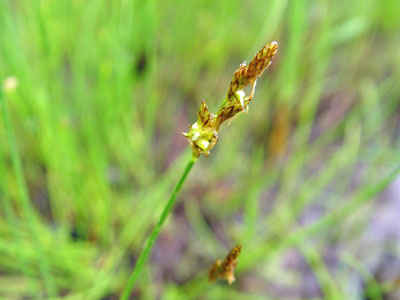DACF Home → Bureaus & Programs → Maine Natural Areas Program → Communities, Plants, and Animals → Rare Plants → Carex sterilis

Carex sterilis Willd.
Dioecious Sedge
- State Rank: S3
- Global Rank: G4G5
- State Status: Special Concern
Habitat: Wet calcareous soils. [Non-tidal rivershore (non-forested, seasonally wet); Open wetland, not coastal nor rivershore (non-forested, wetland)]
Range: Newfoundland to Minnesota, south to Pennsylvania and west to Illinois.
Aids to Identification:Identification of the species of Carex is usually very difficult and relies on technical morphological features. Carex sterilis belongs to the section Stellulate, a group that is characterized by gynecaudrous spikes (pollen bearing flowers borne at the base of the spike), sharp margined (but not wing margined) perigynia with a thick, spongy base. Carex sterilis is identified by its subdioecious habit. All other members of the Stellulate will show reproductive stems that produce both pollen bearing flowers and ovule bearing flowers (termed monoecious). Carex sterilis, on the other hand, produces these two types of flowers on separate stems (though each type of plant may have a few of the other type present). Its specific epithet, sterilis, refers to the pollen bearing stems which will not produce seeds (i.e., sterile).
Ecological characteristics: In Maine this sedge has been found growing along gravelly rivershores (riverside seep community) and in circumneutral (calcareous) fens.

Phenology: Fruits June - August.
Family: Cyperaceae
Synonyms: Carex elachycarpa Fern.; Carex muricata L. var. sterilis (Fern.) Gleason; Kobresia elachycarpa (Fern.) Fern.
Known Distribution in Maine: This rare plant has been documented from a total of 22 town(s) in the following county(ies): Aroostook, Cumberland, Penobscot, York.
Reason(s) for rarity: Suitable calcareous habitat is scarce.
Conservation considerations: Maintain hydrologic integrity of wetland and rivershore habitat.